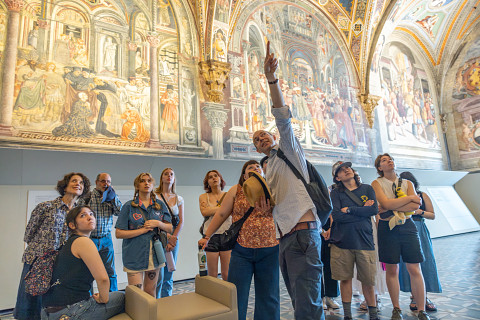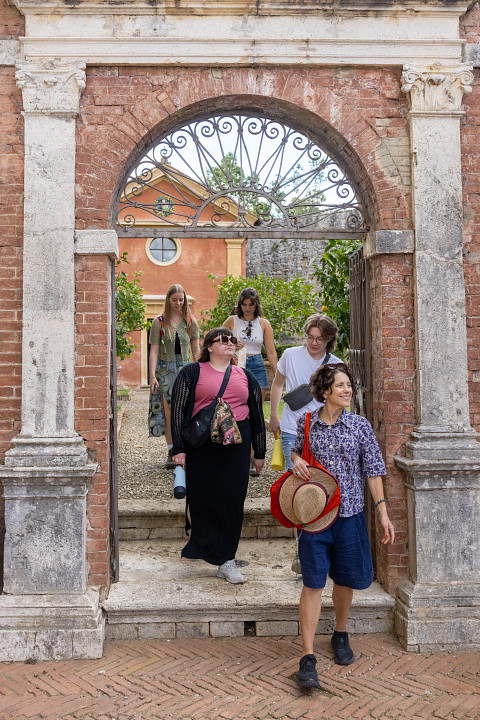Summer in Tuscany with Comparative Cultural Studies
Have you ever wanted to experience the beauty of summer in Tuscany? The Comparative Cultural Studies Department ventures to Italy every summer for educational programs spanning art history to the environmental humanities. One of the CCS students, H.J. Lemon, shared their experience of the unforgettable Summer 2024 “Tuscany: Nature, Culture, and Sustainability” program for the CAL blog:
Over the summer, I had the opportunity to spend a month in beautiful Tuscany, Italy, the birthplace of the Renaissance. Along with eleven fellow NAU students, I earned six credits while exploring a wide variety of places, including the world class Uffizi– of which I must have a thousand pictures– to sweet small-scale farms and ranches, raising heritage breeds of cattle which have existed for nearly a millennium. The leader of our group, Professor of Humanities Dr. Gioia Woods, has curated this trip for more than a decade, and from her experience we ventured away from the usual tourist spots to learn more about local life. The Italy Study Abroad program offered by the department of Comparative Cultural Studies invites a variety of majors to apply, from environmental science to art history, and offers a life-changing, paradigm-shifting experience no matter your academic background.

The Cathedral and Baptistery of Pisa– which stand perfectly upright all on their own next to the famous leaning tower– were jaw-droppingly beautiful in a way that tore my soul out and stuffed it back in. The interior of the Cathedral features stories upon stories of frescoes, a carved gilt ceiling that will make your neck hurt from admiring it, the iconic black and white striped pillars of northern Italy, and, on the inner surface of the dome, a glittering mosaic: the Byzantine likeness of Jesus depicted between Mary and St. John by artist Francesco da Pisa. During our visit, art students captured some of the majesty of the interior, but while their sketches were beautiful, they could not replicate the sense of awe evoked through the experience. Even from my purely secular perspective, experiences such a building makes you realize the capacity in which people have to care, to love what is important to them, and then to manifest that love in beauty. That may have been the only time in my life where I’ll get to see the Pisa Cathedral in person, but I know I will remember for a lifetime.

Whether traveling to the beaches of Piombino or walking ten minutes to the grand, masterwork Siena Cathedral while living in Siena– every location centered around the poignant theme of cultural sustainability. In the U.S., conversations about walkable cities, third-spaces, and community-oriented approaches to public well-being are becoming more and more socially relevant. Our time in Italy highlighted the way these things have already been nearly perfected by many cultures outside around the world, with Tuscany among them. We were fortunate to meet with local workers and thinkers who have spent their whole lives dedicated to cultural values such as sustaining regional heritage and public beauty or have contributed to sustainable agriculture and farming in their daily lives. As we spent time visiting wheat farmers and art curators, we learned about their community-oriented approaches firsthand. I left with the important lesson to maintain a focus on people and community above all else– and with a fieldwork credit which allowed me to bring my graduation date up by a semester.
You may only order cappuccinos because you are afraid to pronounce anything else, or commit the faux pas of ordering limoncello before dinner, and you may even grow tired of Italian food, (not speaking from personal experience of course) but you will not be able to replicate the experience of exploring Tuscany as a university student at any other point in your life. Between gelato and duomos, you will experience flavors and vistas impossible to forget!
